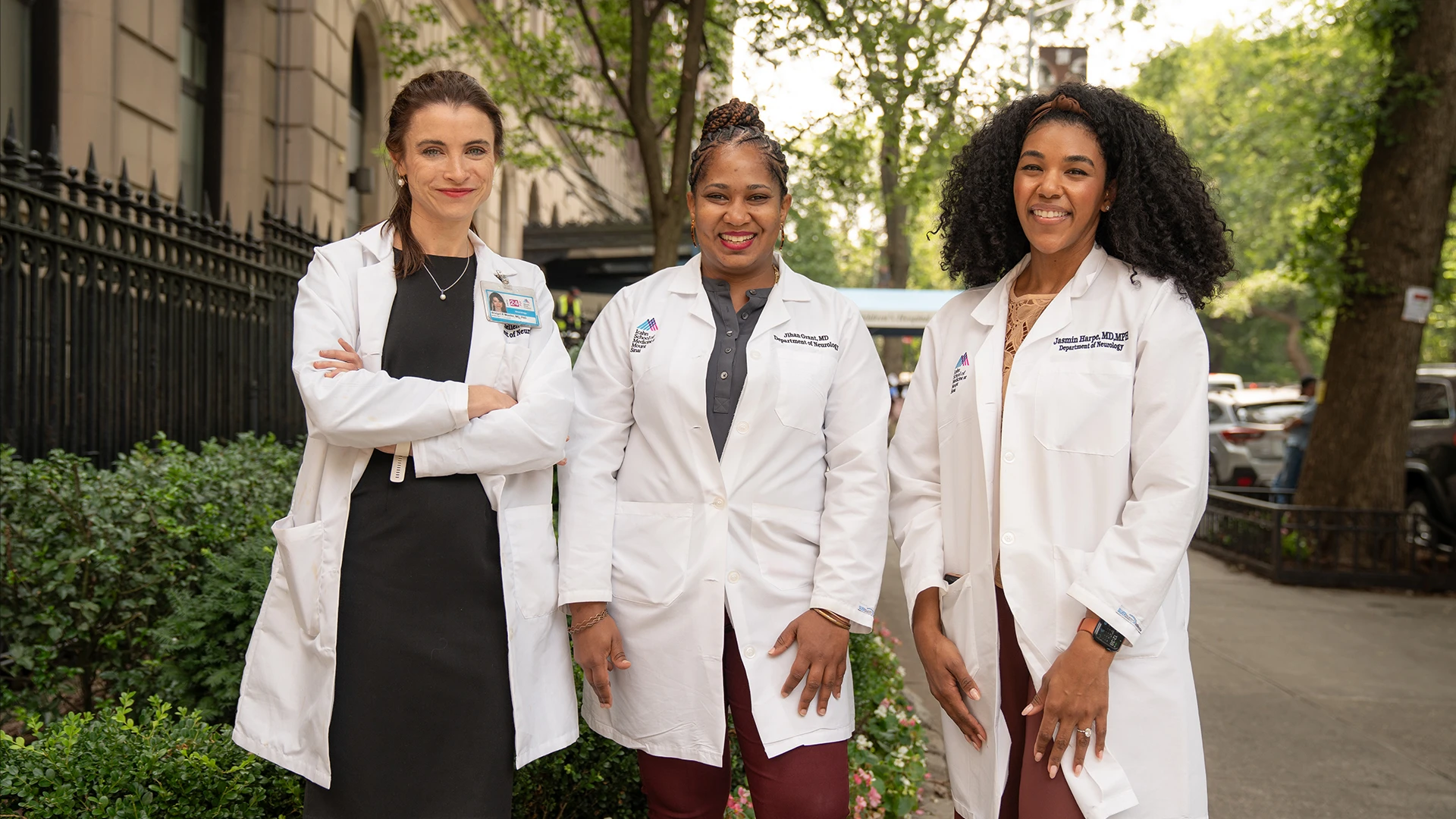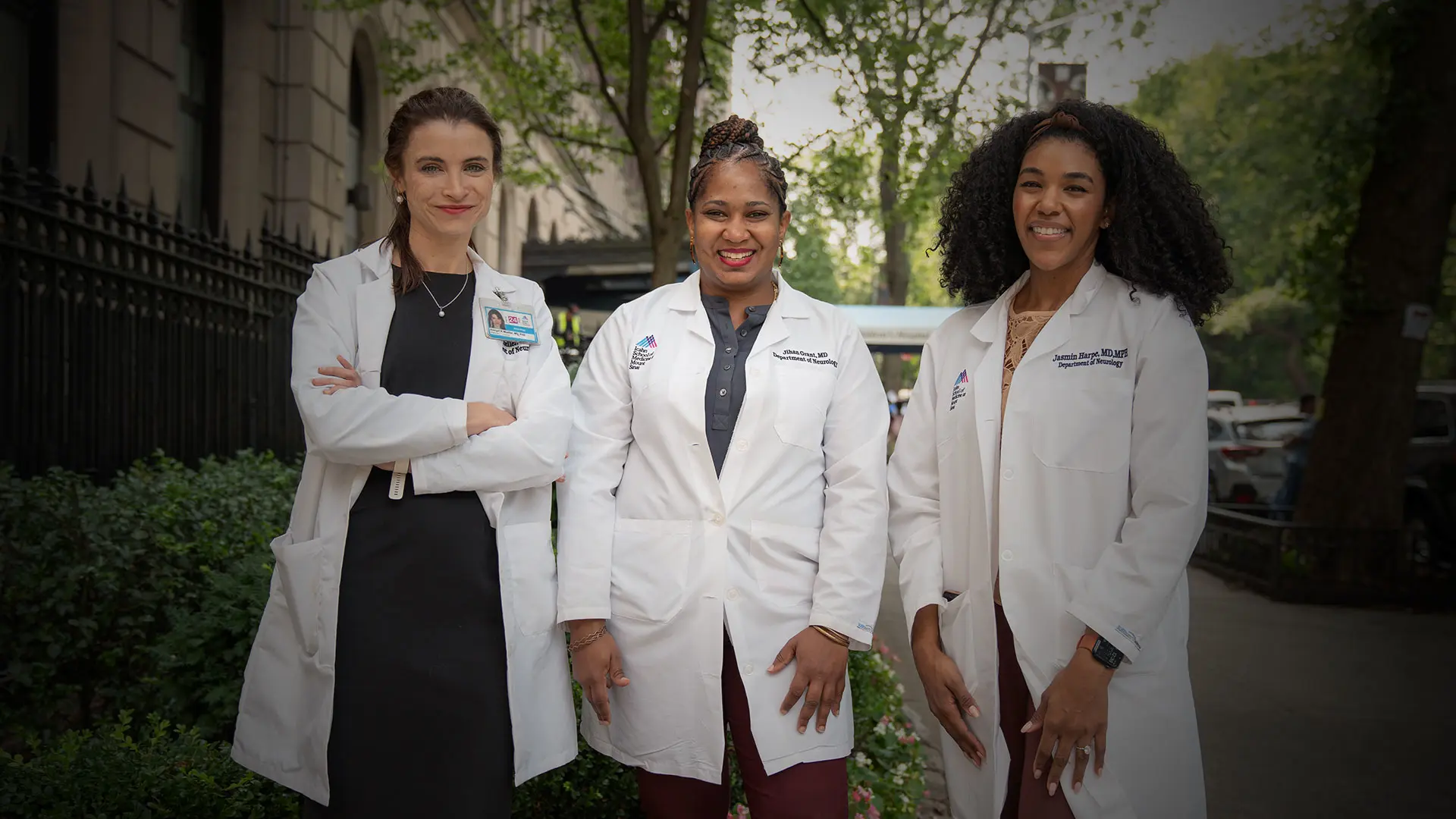The lack of precision medicine tools in headache medicine leads to significant delays in headache relief and may compromise the therapeutic relationship between patient and clinician.
With a generous gift from The Gottesman Fund to create the David S. and Ruth L. Gottesman Center for Headache Treatment and Translational Research, Bridget R. Mueller, MD, PhD, and her colleagues at the Gottesman Headache Center, aim to change the way neurologists treat headache—focusing on pathology, not symptoms. Dr. Mueller, Assistant Professor of Neurology, is Research Director of the Gottesman Center.
“We are one of the three largest headache centers in the United States, caring for more than 10,000 patients every year. Our clinical volume and the Mount Sinai Health System’s diverse urban patient population provide a tremendous opportunity to understand the heterogeneity of this disabling neurological condition,” says Dr. Mueller. “We are well positioned to study how clinical and demographic factors influence the therapeutic response, providing a foundation for the development of precision medicine-based treatment approaches and enhanced clinical trial design, thanks in large part to our new research endowment.”
The Advancing Innovation in Migraine (AIM) precision treatment registry aims to engage patients from communities that have been historically underrepresented in research.

From left, Bridget R. Mueller, MD, PhD; Jihan A. Grant, MD; and Jasmin Harpe, MD, MPH.
With support from The Gottesman Fund and a National Institutes of Health K12 award recently received by Dr. Mueller, the Gottesman Headache Center has begun enrolling patients in the Advancing Innovation in Migraine (AIM) precision treatment registry. By answering a set of detailed questionnaires relating to migraine symptoms and medical history, as well as past treatment successes and failures, the etiology of migraine may be more quickly identified. In addition, through the registry, the center aims to engage patients from communities that have been historically underrepresented in research.
It was the exceptional earlier work of Mark W. Green, MD, Emeritus Director of Headache and Pain Medicine and President of the World Headache Society, that put Mount Sinai at the forefront of headache medicine. The innovative care provided to patient David “Sandy” Gottesman by Dr. Green, and by Dr. Mueller after Dr. Green’s retirement, laid the foundation for a generous gift from Ruth Gottesman in her husband’s memory after his death.
Dr. Mueller’s responsibilities now include building a research infrastructure to power the investigative work of a highly talented team studying various causes of migraine. For example, Dr. Mueller’s research focuses on understanding how physiologic networks involving the autonomic nervous system (ANS), sex hormones like estrogen, and the immune system transform episodic migraine to chronic migraine (CM), which is diagnosed when headaches occur on 15 or more days of the month and 8 meet criteria for migraine. Patients with episodic migraine return to their neurological baseline between attacks, but in CM, features including fatigue, mood dysregulation, and cognitive dysfunction, known as nociplastic symptoms, are frequently present continuously, and indicate a shift in neurological baseline. While the neurobiology underlying the development of nociplastic symptoms in patients with CM is unclear, there is growing evidence that the ANS may play a role.
One area of research focuses on understanding how physiologic networks involving the autonomic nervous system (ANS), sex hormones like estrogen, and the immune system transform episodic migraine to chronic migraine (CM).
Dr. Mueller has previously demonstrated that pathology in the ANS is associated with CM and fatigue [see: Current Pain & Headache Reports, Frontiers in Human Neuroscience, and Headache.] “We already use migraine treatments that target the ANS, including beta-blockers, angiotensin receptor blockers, and vagal nerve stimulators,” says Dr. Mueller. “By testing the ANS in our patients, we have an opportunity to choose the best treatment to correct an individual’s pathology, improving symptoms, and possibly preventing the chronification of pain.”
Another important trigger of migraine stems from pathology in the neck. Jihan A. Grant, MD, Division Chief, Director of the Gottesman Headache Center, and Assistant Professor of Neurology, who is board certified in both headache and interventional pain, uses targeted nerve blocks to treat this disorder.
Dr. Grant explains, “Misalignment in the cervical spine or arthritis in cervical facet joints can irritate nerves as they exit or just after they exit the spinal canal. Some of these nerves in the upper neck join to form the occipital nerves and others sit juxtaposed to the trigeminal ganglion, and their misfiring can lead to both headache and neck pain. It is not surprising that patients with cervicogenic headache are frequently refractory to many of our usual pharmacologic migraine treatments, which fail to address the underlying cause of cervicogenic pain. However, by stopping these irritated sensory nerves in the cervical spine from firing with a nerve block, we can reduce cervicogenic pain, often dramatically.”
Jasmin Harpe, MD, MPH, Assistant Professor of Neurology, is studying how women’s migraines may change while undergoing in vitro fertilization (IVF). “I’m now compiling questions for the AIM registry that ask patients if they have undergone fertility treatment in the past, or plan to do so in the future, since they could be potential subjects for a study,” says Dr. Harpe. “At the same time, the registry will give us a better sense of which patients have hormonal-induced headache so we could offer them the benefits of specialized care.”
Data from a prospective study that Dr. Harpe initiated prior to joining Mount Sinai, which is being prepared for publication, suggests that patients with migraine undergoing IVF may experience higher levels of stress in addition to greater disability from migraine during an IVF cycle. Dr. Harpe and the research team at the Gottesman Headache Center are currently in the process of initiating a prospective study that will enroll patients with migraine undergoing IVF to better understand migraine patterns during fertility treatment.
“Given the large geographic area we serve and the diversity of the patient population at Mount Sinai, we are well poised to participate in such research efforts,” says Dr. Grant. “This is an extremely exciting time in headache medicine given the increase in treatment options available and the well-deserved attention that headache medicine is finally receiving. We are thrilled to be at the forefront of research that may advance this important field.”
